The City of Campobasso has the oldest museum in the region of Molise. This might sound like a “big-whoop” bragging right, but get this – this archeological museum contains items from the third millennium BC. That is 5 thousand years ago! In my mind, that is definitely “big-whoop.” This makes Rome, with its more-recent empire only 2 thousand years ago, a little bit of a “newbie” experience.
Before the Romans conquered the central Italian peninsula, the Samnites inhabited the land. There were two main tribes – the coastal tribe on the east coast of the peninsula and the mountain tribe living in the mountains that go down the center of the Italian peninsula. By all accounts, the Samnites were peaceful people who enjoyed trading with other groups – the Etruscans to the northwest, the Greeks to the southeast, and the peoples in what we now consider the Middle East.
The museum has exhibits that show influences from these different neighboring areas.
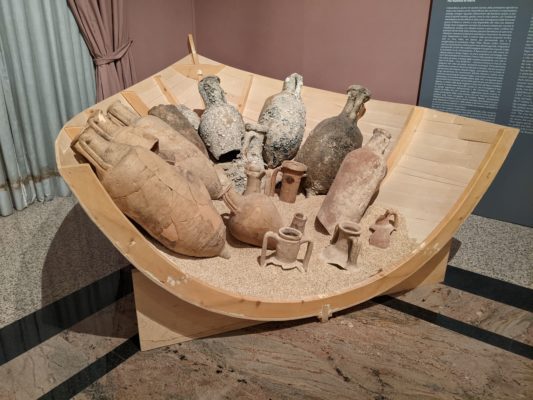
A replica of a ship’s bow shows how goods were transported and traded with other cultures – these jars would hold wine, oil, sauces, fish sauce, and fruit
Being an archeological museum, the key focus is on artifacts that have been discovered in ancient ruins and burial grounds in the area. You can see ancient eating dishes, oil lamps, wine jars, building motifs, and religious artifacts.
One of the key facts that the exhibits keep coming back to is that most of these artifacts have been recovered/discovered from ancient burial graves. Men were buried with communal ceremonial dishes/cups because they would share a meal to celebrate a communal victory.
Women would be buried with cooking pots, wine vessels and jewelry and elaborate clothing, because they were the keepers of the home. Being buried with these things was an honor.
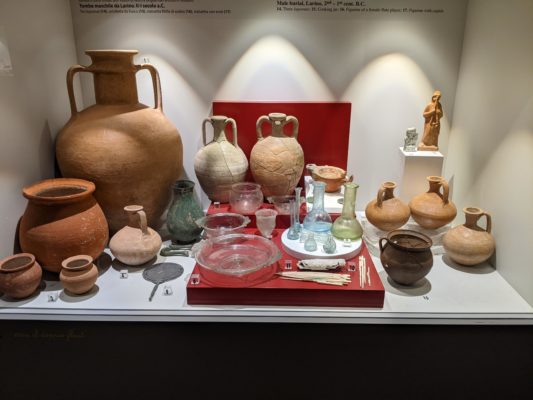
The items on the red display platform and to the left were discovered in female graves, the items to the right are from male graves
Children were buried with cups that didn’t have handles (presumably because children couldn’t deal with handles and had to hold cups with both hands) and little girls who died would be buried with jewelry (to signify a wedding that wouldn’t happen) and other trinkets to signal a loss of future contribution to the community. Same for the boys, but I don’t remember those trinkets because I’m not a boy.
The most arresting exhibit in the museum is that of the excavation of a warrior and his horse. While it’s apparently common to find a human buried with worldly goods, this grave included worldly goods for the horse, like his stirrups, reins, blanket, etc. The signage said that being buried with a horse signified that this person was kind like a chief. Other soldiers who were also good soldiers were buried without their horses.
While my interest in going to this museum was to learn more about the Samnites living in the area (in which there are still a lot of remnants in the countryside), it was also interesting to see other things which had been excavated over many centuries.
There are tools from the 3rd millennium BC and pottery from the 15th century AD and everything in between.
I think my favorite moment in the museum was when Chad and I were looking at an exhibit of old coins from 300 BC and he said, “Well, it seems money hasn’t changed in a long time.”
I would definitely recommend a visit to this museum.
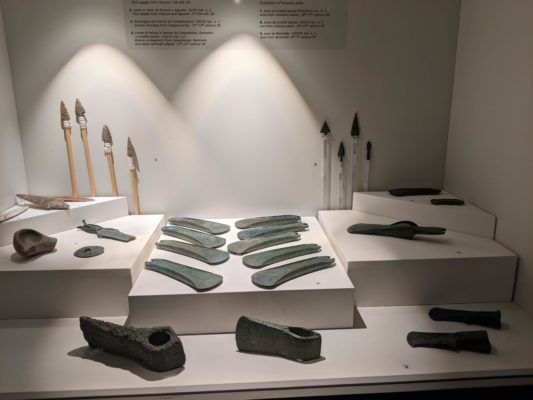
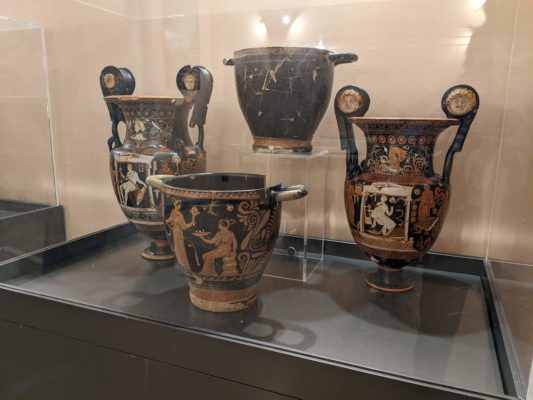
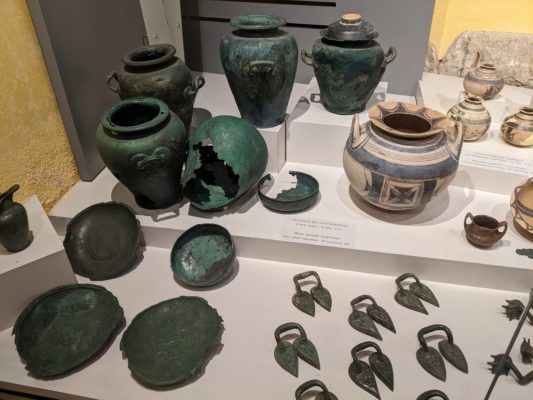


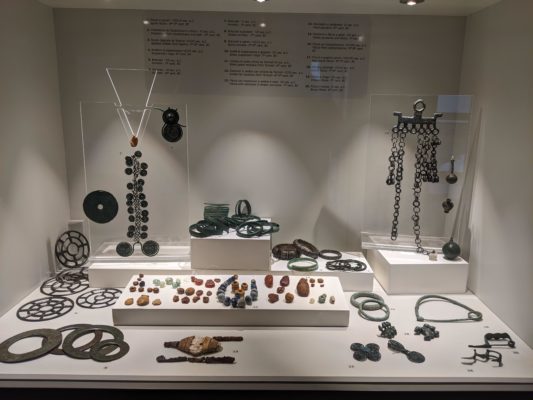
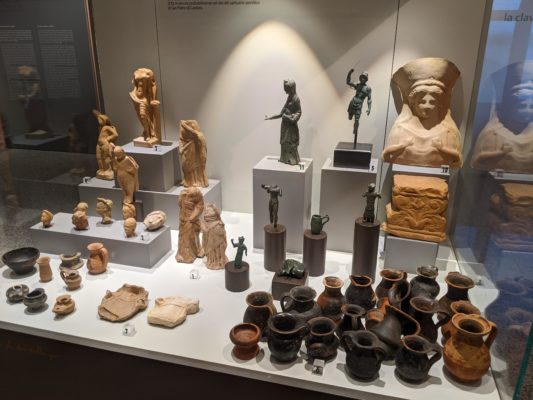
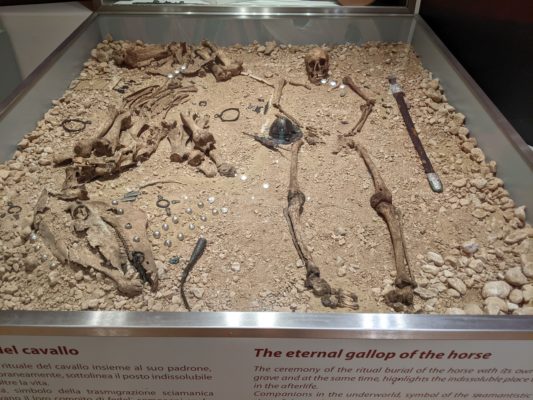
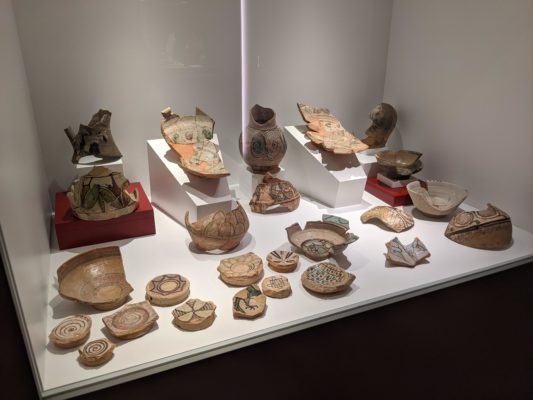

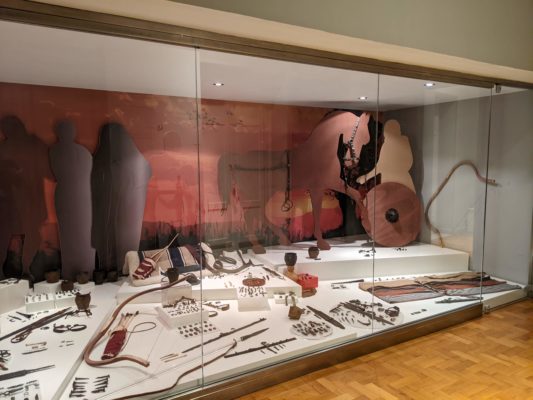
C’est vraiment interessant voir la vie des peuples anciens et leurs objets quotidien.